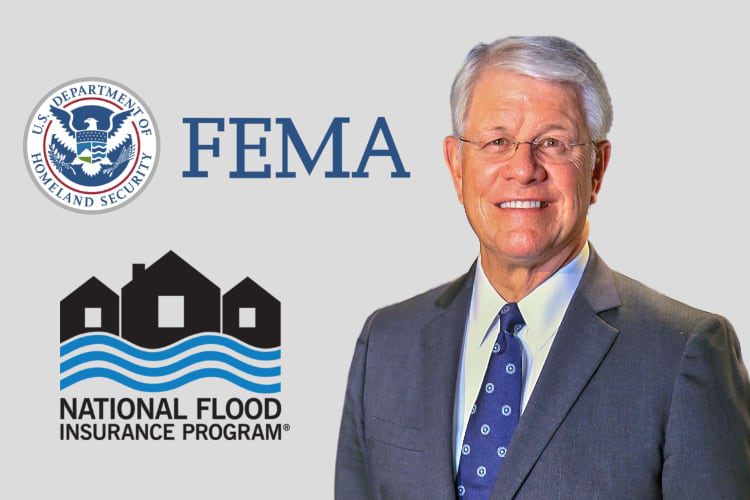FEMA lifts NFIP traditional reinsurance renewal 23% to $619.5m for 2024

FEMA has renewed the National Flood Insurance Program’s (NFIP) traditional reinsurance tower at a larger $619.5 million in size for 2024, a 23% increase on the prior year’s placement.
In continuing its risk management practice against catastrophic flood losses, the U.S. Federal Emergency Management Agency (FEMA) returned to the traditional reinsurance market back in September, as we reported at the time.
Now, citing a still challenging reinsurance renewal marketplace, FEMA reports that it purchased more limit, so lifting its overall reinsurance protection, including the FloodSmart Re catastrophe bond program, close to the $2 billion level.
Once again, FEMA has opted for an annual flood reinsurance contract for the NFIP for 2024, so multi-year cover continues to be solely provided by the cat bond program.
FEMA has renewed the traditional reinsurance program to transfer $619.5 million of the NFIP’s financial risk to the private reinsurance market, in a placement backed by 18 private reinsurance companies, which is the same number of markets as the prior year.
For 2024, the traditional reinsurance placement covers NFIP flood losses arising from a single event above an attachment of $7 billion, which is the same as at the 2023 renewal.
For 2024, the renewed reinsurance agreement is structured to cover slightly more risk across the two same layers of the tower:
8.9125% of losses between $7 billion and $9 billion
22.0625% of losses between $9 billion and $11 billion
FEMA said that it will pay a total premium of $121.1 million for the reinsurance coverage.
FEMA still has $1.3 billion in reinsurance from the outstanding FloodSmart Re catastrophe bonds available to it as well, across the three most recent cat bond transactions it has sponsored, the last being in March 2023.
Meaning that, adding this renewed $619.5 million of traditional reinsurance to the three capital markets reinsurance placements made between 2021-23, FEMA has transferred $1.9195 billion of the NFIP’s flood risk to the private sector.
The cat bonds only cover named storm related flood events.
“With continued difficult market conditions this year, FEMA remains committed to long-term use of private sector reinsurance,” explained David Maurstad, FEMA’s Deputy Associate Administrator for Resilience and senior executive of the National Flood Insurance Program.
“However, the program will adjust NFIP reinsurance investments whenever necessary to reflect market conditions as we did again this year.”
FEMA notes that the reinsurance protects the government balance-sheet and therefore ultimately taxpayers, saying that, “If a qualifying catastrophic flood event occurs, reinsurance companies cover a portion of the NFIP’s losses to enhance FEMA’s ability to pay flood insurance claims without borrowing from the U.S. Treasury.”
Guy Carpenter acted as the reinsurance broker for FEMA’s latest NFIP flood reinsurance placement.
As a reminder, the NFIP’s flood insurance claims from 2022’s hurricane Ian rose to $4.3 billion around September last year, which meant that reinsurance carriers participating in the lowest layer of FEMA’s 2022 National Flood Insurance Program (NFIP) reinsurance tower appeared to be facing losses.
It’s not clear where the NFIP’s claims burden from hurricane Ian now sits, but it appears this has not dramatically affected FEMA’s ability to renewal flood reinsurance this year, as evidenced by the growth of the traditional placement again for 2024.
A year ago, for 2023, the NFIP reinsurance tower shrank dramatically to just $502.5 million in size, in response to the hard and challenging reinsurance renewal market conditions.
That was a more than 50% reduction on the prior year’s $1.064 billion of flood reinsurance secured for the 2022 calendar year.
In years before that, FEMA had renewed its traditional reinsurance program with $1.33 billion of flood reinsurance at the January 2020 renewals, and in January 2019 renewed a $1.32 billion traditional reinsurance placement.
The first full placement of the NFIP reinsurance tower was in 2018, when FEMA secured $1.024 billion of traditional reinsurance.






